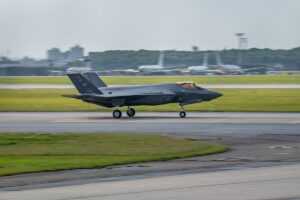
The Government Accountability Office (GAO) is raising questions about an envisioned power and thermal management system (PTMS) upgrade for the Raytheon Technologies' [RTX] Pratt & Whitney F135 engine on the Lockheed Martin [LMT] F-35 fighter. The Air Force decided to move forward on an Engine Core Upgrade (ECU) for the F135 and included $245 million for ECU in the service's fiscal 2024 budget request, which ends the service’s Advanced Engine Transition Program (AETP) for the F-35 (Defense Daily, March 13).…














